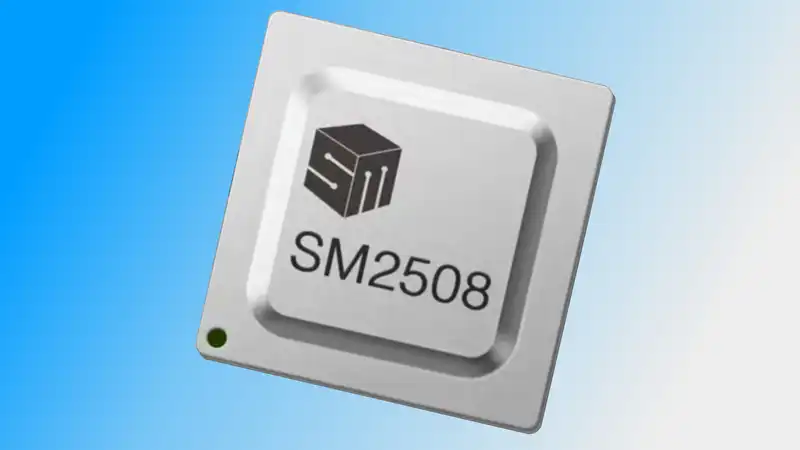Good news everyone. The only PCIe 5.0 SSD controllers that make sense now are starting to ship to drive manufacturers. This means that a worthwhile Gen5 drive will be available by the end of the year.
The SiliconMotion SM2508 memory controller (pdf warning) has reportedly been delayed several times due to the switch to a more advanced 6nm process at TSMC. We had originally expected it to appear earlier this year, but it is finally shipping to manufacturers to produce their own SSDs with this new controller.
But what is the problem with this new little piece of silicon that might make a PCIe 5 SSD adequate? Half of this equation has already been taken care of by the Phison E26 controller. But it doesn't get hot in the slightest.
This is why PCIe 5 drives have a variety of active cooling features, and also why we acknowledge that if you want to get the most out of your expensive SSD, you need to cool your chips yourself. This is also why we do not actively recommend PCIe 5 SSDs.
Certainly, sequential read and write speeds are impressive, and 12,000-14,000 MB/s is not beyond the realm of possibility. But what is the reality? If your board has only one Gen5 slot, this transfer rate will only show up if you are moving large files on a single SSD. In and out of that drive will always be limited by the slowest drive or the slowest interface.
Also, random 4K read/write speeds have changed little from the PCIe 4 SSDs that have become ubiquitous. This means that you won't suddenly notice a more nimble Windows experience because the Gen5 boot drive doesn't handle the myriad of tiny read/write operations that make up your daily OS workloads. [The introduction of the SiliconMotion SM2508 controller changes none of these performance issues. You're still limited to getting fast SSDs in and out, and random 4k performance remains the same, but operating efficiency is much improved.
This is thanks in part to the 6nm process, which allows it to run at about 7W, compared to 11W or more for competing products. This means that bulky active cooling solutions are not necessary. A heatsink may still be necessary, but if it eliminates the need for a small rotating fan, it's a huge success in my book.
Apparently, compared to current PCIe 4.0 SSDs, SiliconMotion offers an SSD that is essentially the same in terms of power and thermal characteristics, but brings the straight-line speed of a rival PCIe 5 controller. siliconMotion consumes more than Gen4 drives in some states It even claims to consume less power.
Interestingly, it features a quad-core ARM Cortex R8 processor, which uses standard memory instead of flash memory to achieve peak speeds on ultra-low latency workloads. This is apparently something that rival controllers cannot do, and it will be interesting to see what it means in terms of raising 4K numbers.
No word on when drives with this controller will be available or who will be the first to use this new silicon, but it could make a big difference in the proliferation of Gen5 SSDs. Jacob was at Computex this year to discuss Micron's Consumer Components Group's VP and GM, Dinesh Bahal, who said that even though so much time has passed since launch, "the ratio of Gen5 shipments to Gen4 shipments is very small."
The Gen4 SSDs are not the only SSDs that are being used in the market.
However, he expects the last hurdle, pricing, to start shifting soon as well.
"Watch this space over the next nine months or so," Bahar said.
"And there will be some interesting Gen 5 announcements that will help the transition from Gen 4 to Gen 5.
"There will definitely be a price difference, but it won't be very big.
Phison also plans to release the E31T controller, first shown off at CES, at some point this year. It is a slower drive, with sequential performance of just under 11,000 MB/sec, but efficient operation is a priority. The arrival of a competing PCIe 5 drive toward the end of the year should provide the necessary impetus for a new generation of SSDs.
.

Comments